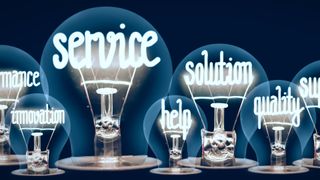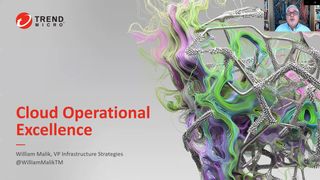What is IT service management?
Our quick guide to ITSM and how it can benefit your business

In the past, companies have regarded IT as merely a department within the broader organisation that troubleshoots any problems with hardware and software it needs to function.
However, treating IT as a service can reap far more significant dividends as it helps businesses support their goals and their customers. Rather than dealing with issues ad hoc, IT departments can serve a more innovative role by offering services and technologies intended to increase value.
ITaaS is usually accomplished through a third party, but you can follow the same principles internally through IT service management.
What is IT service management and how does it work?
IT service management, otherwise known as ITSM, is just how IT teams manage the end-to-end delivery of IT services to end users in the business.

Discover leadership insights from CIOs for CIOs and take control of your digital transformation
Pilots, co-pilots, and engineers: Digital transformation insights from CIOs for CIOs
It revolves around designing, creating, delivering, improving, and managing the lifecycle of IT services. Companies that follow processes see IT services as a way of delivering business value and achieving objectives. Rather than just fixing problems as they arise, under ITSM, IT teams are meant to be constantly learning and improving processes and supporting the business’ digital transformation.
This process should be supported by software that helps the IT team support the organisation. It should automate everyday processes to enable staff and give them more time back for strategic projects, which will move the business forward.
What benefits can ITSM give your business?
ITSM improves the overall function of your company in several ways.
Get the ITPro. daily newsletter
Receive our latest news, industry updates, featured resources and more. Sign up today to receive our FREE report on AI cyber crime & security - newly updated for 2024.
It can improve efficiency. ITSM has many parts that help businesses maximise their resources. For example. IT asset management can enhance the life cycle management of IT assets and create cost-effective strategies for asset procurement and disposal.
It can reduce operations costs. ITSM can assist IT teams to scale operations more easily without the need for excessive hiring through automation that reduces manual workload.
ITIL vs. ITSM: What’s the difference?
So, you like the sound of streamlined processes and better customer service, but how do you get started?
Software company Atlassian warns against copying and pasting another business’ set of standards, no matter how successful they appear to be. Every business has a unique environment with unique needs, and since the entire point of ITSM is to drive your business goals and improve its processes, it doesn’t make sense to copy the processes of another business with different goals and ways of working.
Instead, you’ll want to build upon one of the many frameworks that provide guidance for optimising ITSM.
ITIL, or the IT Infrastructure Library, is the most widely recognised. Created in the mid-1980s and updated since, ITIL focuses on end-to-end value delivery through service relationships, or a Service Value System (SVS). The aim is to improve the effectiveness, scalability, and stability of your services and manage risk.

Cloud operational excellence
Everything you need to know about optimising your cloud operations
The latest iteration of ITIL, ITIL 4, was released in 2019 with the aim to provide more flexibility for supporting businesses undergoing digital transformation projects. For a run-down of ITIL 4, read this guide.
There are also frameworks specific to different industries or business requirements, like Business Process Framework (eTOM), which is designed for telecommunications service providers.
However, successful IT teams will not take any of these frameworks as a rule book they must follow, but guidelines that they can adapt to their business and customers.




